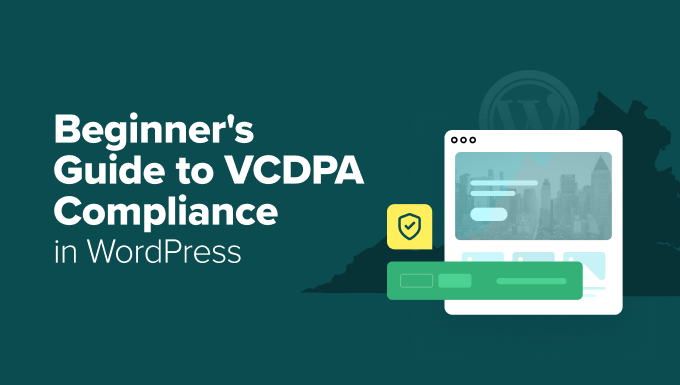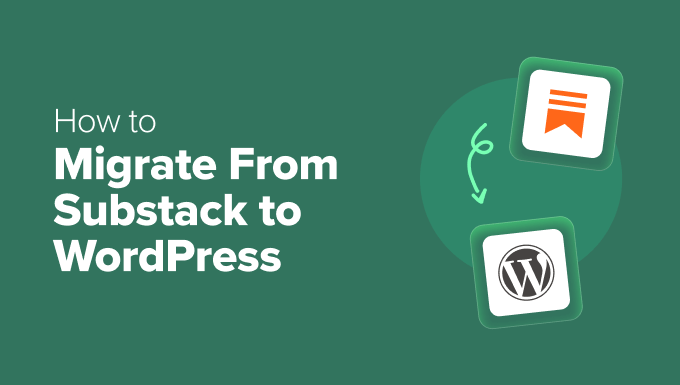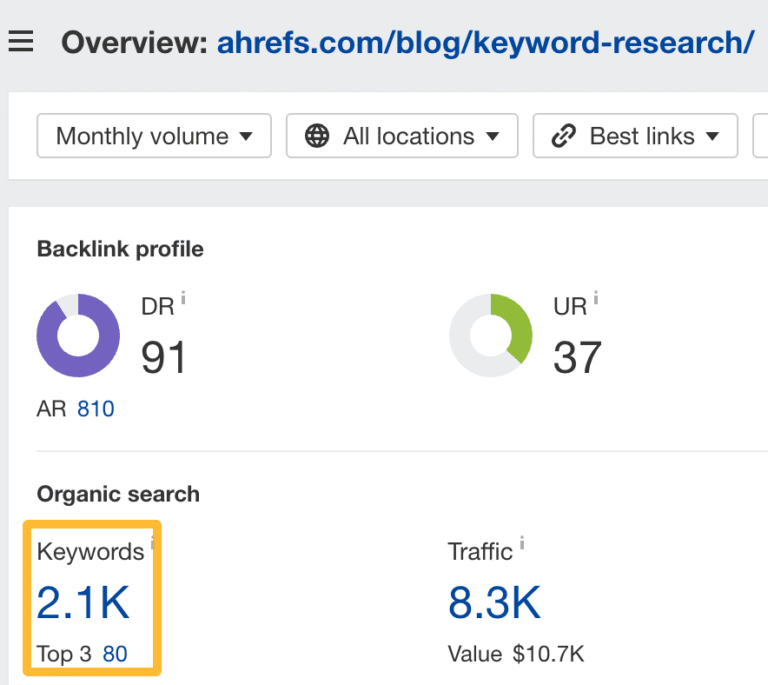Last year, I saw someone miss out on their dream domain name because they didn’t know about domain backordering. They’d been waiting months for this domain to expire, but someone else swooped in and grabbed it the moment it became available.
Over the years, I’ve helped many different website owners secure their desired domain names through backordering. I’ve tested numerous domain registrars and backorder services, learning what works (and what doesn’t) when trying to grab an expiring domain name.
If you’ve got your eye on a domain that’s currently registered to someone else, I’ll show you exactly how domain backordering works.
I’ll also show you the best ways to increase your chances of securing that perfect domain name.
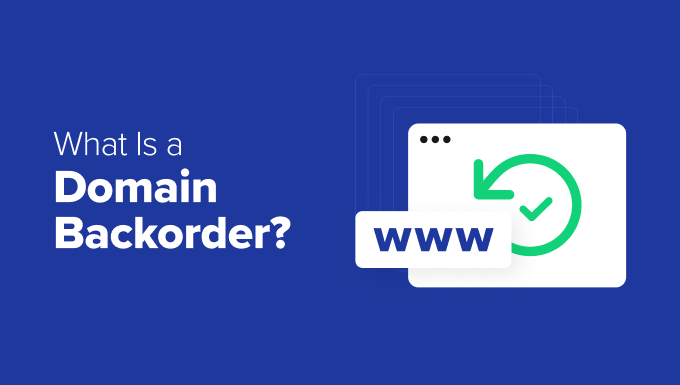
What Is Domain Backordering and Why Use It?
Did you know that thousands of valuable domain names expire and become available again every single day? Yet many people don’t realize there’s a systematic way to claim these domains before someone else snatches them up.
That’s where domain backordering comes into play.
What Is Domain Backordering?
A domain backorder is essentially a service that attempts to register a domain name the moment it becomes available. When you use a backorder service, you are placing a reservation on a domain that’s currently registered to someone else.
It’s like standing first in line for a ticket to a sold-out show, hoping someone cancels so you can grab their spot.
And trust me, the thrill of finally acquiring that ideal domain is unbeatable.
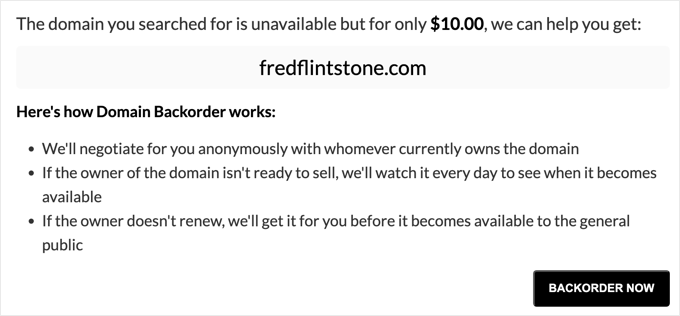
Why Would You Backorder a Domain?
Sometimes, you’ll come up with a perfect domain name for your blog or online store, but it’s already taken. Perhaps it’s not being actively used — or worse, the domain is parked and gathering dust. That’s when domain backordering can be a game-changer.
Here are some reasons you might consider backordering a domain:
- You can potentially get a premium domain name that’s currently registered.
- It’s more cost-effective than buying directly from the current owner, who might demand a premium price.
- You get professional assistance in securing the domain the moment it’s available, saving you time and energy.
- Using multiple backorder services can boost your odds of success.
Challenges of Domain Backordering
I’ve also learned that domain backordering isn’t perfect. There are some challenges and risks.
Mainly, there’s no guarantee you’ll secure the domain because you might not be the only one who wants it. If multiple parties backorder the same domain, it could go to auction, driving up the price beyond what you might be prepared to pay.
I’ve also noticed that some services charge you even if the backorder attempt is unsuccessful. And sometimes, the current owner renews the domain at the last minute, resetting the whole process and leaving you back at square one.
If you don’t mind the risk that it doesn’t work out, keep reading!
What have you got to lose?
It might seem scary at first, but I’ve gone through the domain backordering process numerous times, both for myself and my friends.
Here’s a quick overview of what I’ll discuss in this article:
I’ll cover everything you need to know about domain backordering and tips to help you increase your chances of securing that perfect domain name.
The Domain Registration Life Cycle: How Does it Work?
Timing is everything when it comes to domain backordering. But when exactly is the right moment to place that backorder?
To answer that, you need to understand how domain names progress through their lifecycle. Here are the main phases:
- Domain Registration Periods: Every domain name is registered for a set period, usually ranging from 1-10 years. During this time, the owner has full rights to use and renew the domain as they see fit.
- Expiration and Grace Periods: When a domain’s registration period ends and it’s not renewed, it doesn’t become available to the public immediately. Instead, it enters what’s called a Grace Period. This typically lasts between 30 and 45 days. During this phase, the current owner can still renew the domain at the regular renewal price without any penalties.
- Redemption Period: If the domain isn’t renewed during the Grace Period, it moves into the Redemption Period, which usually lasts about another 30 days. Now, the original owner can still reclaim their domain, but they’ll have to pay a hefty redemption fee — sometimes up to $200.
- Pending Delete Status: After the Redemption Period ends, the domain enters the Pending Delete phase, which lasts around 5 days. At this point, the domain is scheduled for deletion, and the original owner can no longer renew it. No one can modify or register the domain during this time.
Once the registration status is deleted, the domain becomes available to the public!
Now, here’s an illustration that may help you visualize the lifecycle of a domain a little better:
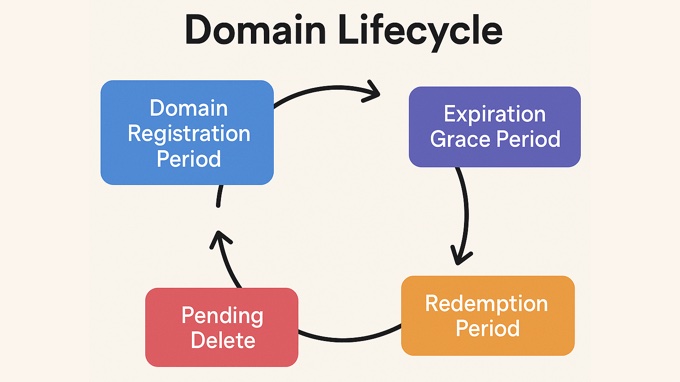
If you discover your dream domain is in the redemption or pending delete phase, it may be time to act. But if you find your desired domain doesn’t expire for another 9 years, that’s probably your sign to be patient and check in later (or look for another domain).
In the next section, we’ll show you how to monitor a domain’s status. This way, you can decide whether it’s worth it to put in a backorder.
Here’s a quick overview of some useful terms related to the domain life cycle:
🕒 Grace Period: A 30-45 day window after expiration when the current owner can renew the domain at the regular price.
💰 Redemption Period: An additional 30-day phase where the owner can reclaim the domain by paying a redemption fee.
⏳ Pending Delete: The final 5-day countdown before the domain is released to the public. No renewals or changes can be made during this time.
🗑️ Domain Drop: When the domain is officially deleted from the registry and becomes available for registration by anyone.
🎯 Drop Catching: The process of attempting to register a domain the instant it’s released during the Domain Drop.
Doing Your Research Before Backordering a Domain Name
When you’re looking to backorder a domain name owned by someone else, it’s important to do some basic research first.
I’ve learned from experience that not all domains are created equal. Some might violate copyrights or trademarks, have been used to distribute malware or spam, or have been involved in other malicious activities. You definitely want to avoid those pitfalls.
But don’t worry — there are plenty of tools at your disposal to help you do your research.
Monitoring the Domain’s Status
Staying informed is half the battle in domain backordering. WHOIS tools provide you with historical WHOIS records for all types of domain names.
This helps you see when a domain name was created, when it was last renewed, when DNS changes were made, and other historical data.
By reviewing the historical WHOIS records, you can spot any red flags, such as frequent ownership changes, which might indicate issues.
Here are some tools I’ve found particularly helpful for monitoring a domain’s lifecycle:
- ICANN WHOIS Lookup: The official ICANN WHOIS lookup tool offers authoritative data directly from the domain’s registry. It displays important dates like creation, expiration, and last updated, as well as the domain’s current status codes.
- DomainTools: This website provides comprehensive WHOIS records along with historical data. It can help you track changes over time and see if the domain has gone through multiple expiration cycles.
- ExpiredDomains.net: This platform lists domains that are expired, pending deletion, or available soon. It’s a valuable resource for monitoring domains approaching the end of their lifecycle and identifying potential backorder opportunities.
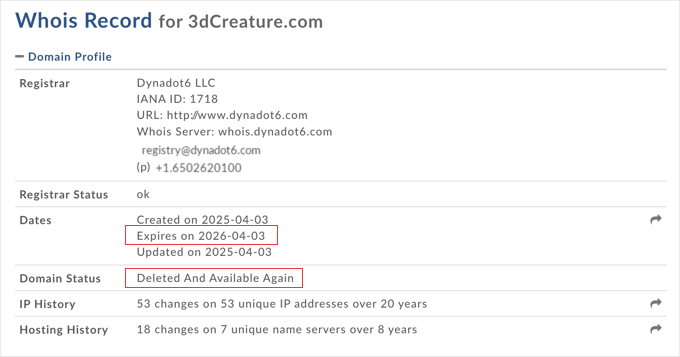
By using these tools, you can keep a close eye on your desired domain’s status and be ready to place a backorder at the optimal time.
I’ve found that combining these monitoring tools with backordering services significantly increases my chances of securing the domains I want.
Checking for Trademarks
Next, you’ll want to make sure the domain name isn’t infringing on any registered trademarks.
According to ICANN rules, if a domain name violates a company’s registered trademark, then that company can claim the domain name or ask you to take it down. I’ve seen this happen, and it’s a situation you definitely want to avoid.
You can check the United States Patent and Trademark Office’s database to do a quick trademark search. Simply enter your desired domain name in the search box to see if it returns any matches.
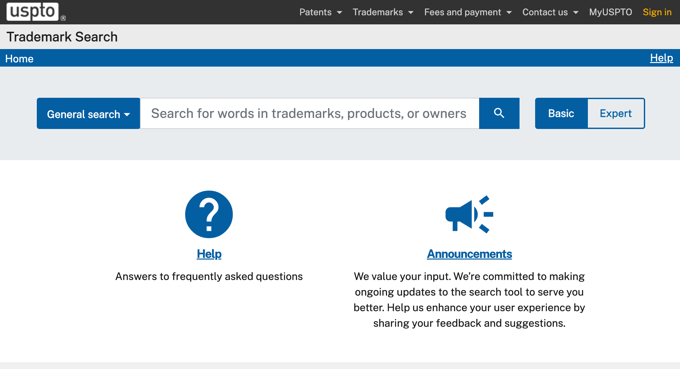
Checking Past Domain Name Usage
It is also important to check how the domain has been used in the past. What kind of websites were associated with it? Was it linked to any suspicious activities?
I’ve made it a habit to check a domain’s history before proceeding.
The easiest way to do this is to use the Wayback Machine. It is a massive historical archive of the internet, with snapshots of websites archived regularly.
By entering the domain name, you can see past versions of the website and get a sense of its previous content.
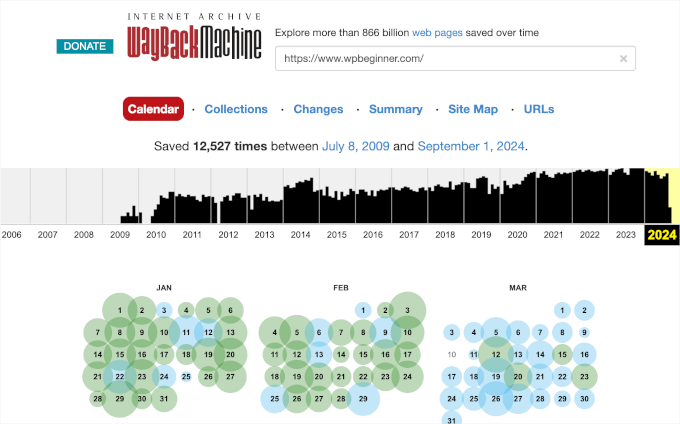
Running a Domain Health Check Test
Finally, you need to make sure that the domain hasn’t been used for spamming, launching cyber attacks, or spreading malware. I’ve learned that inheriting a domain with a bad reputation can cause major headaches down the line.
You can use tools like MxToolBox’s domain health tool to check for any red flags. Simply enter the domain name, and the tool will run a series of checks to identify potential problems.
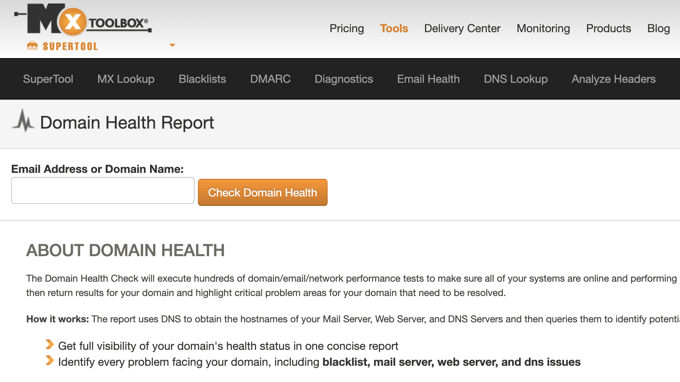
Choosing the Right Backordering Service
Selecting the right domain backordering service can make all the difference when you’re trying to secure that perfect domain name.
Not all backordering services are created equal. Some clearly show their prices and are helpful when you have questions. Others make it hard to get the information you need when you need it.
In my experience, here are the key criteria you should look for in a backordering service:
- Transparent Pricing and Policies: You don’t want any surprise fees popping up.
- Track Record: A service with a history of successful backorders increases your chances of securing that perfect domain.
- Good Customer Support: When questions arise, responsive support is very important.
- Clear Communication: Receiving timely updates keeps you in the loop.
Now, let’s dive into some of the popular domain backordering services I’ve encountered. I’ll highlight their key features to help you make an informed decision.
1. Domain.com
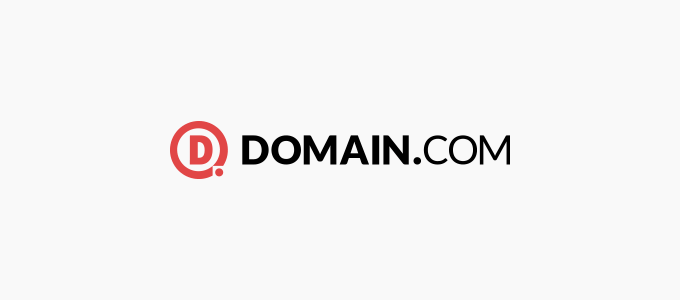

Domain.com specializes in premium domain acquisitions. They’ve helped me secure unique domain names that I couldn’t find elsewhere.
This is what I like about Domain.com:
- They keep a close watch on expiring domains, increasing your chances of acquiring them.
- Speed is critical, and they don’t waste any time when a domain becomes available.
- They have a curated list of premium domains that might just fit your needs.
- Their team is ready to assist with any questions or issues.
One thing to keep in mind is that pricing details can vary with Domain.com.
It’s best to check their current rates and policies directly. I’ve found their investment worthwhile when searching for a special domain name.
2. Namecheap
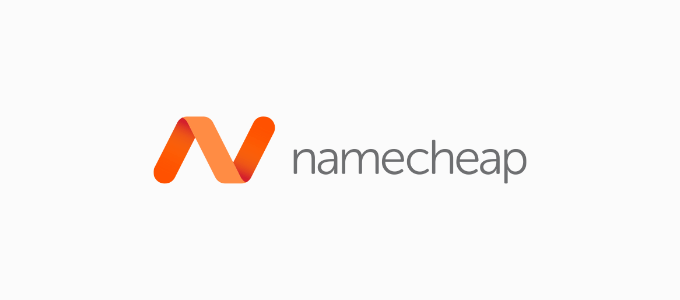

Namecheap offers a user-friendly backordering experience. I think it’s an especially good option if you’re on a tight budget.
This is what I like about Namecheap:
- You only pay if the backorder is successful.
- You stay informed throughout the process with up-to-the-minute information.
- If the domain goes to auction, then it’s all handled seamlessly within their system.
- The platform is straightforward to navigate, even if you’re new to backordering.
I’ve appreciated their straightforward approach. However, I’ve also found that they might have less aggressive drop-catching capabilities compared to some larger services.
3. Network Solutions
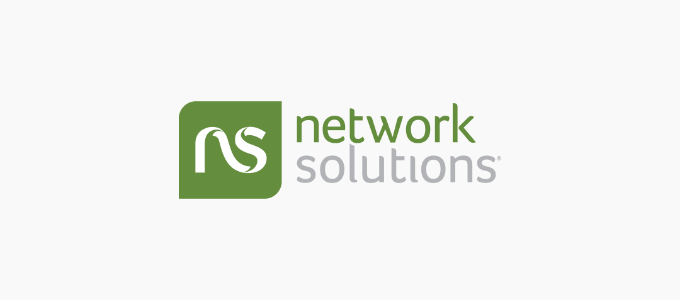

Network Solutions brings a wealth of experience, especially if you’re targeting niche or specialized domains.
This is what I like about Network Solutions:
- Ideal for industry-specific domain names.
- They don’t give up easily and keep monitoring for longer durations.
- Knowledgeable staff can guide you through the process.
- As one of the oldest registrars, they offer legacy domains and have a deep understanding of the domain landscape.
Network Solutions may be particularly useful if you’re working with clients in specialized fields. However, their pricing can be higher, and sometimes their interface feels a bit outdated compared to more modern platforms.
4. GoDaddy
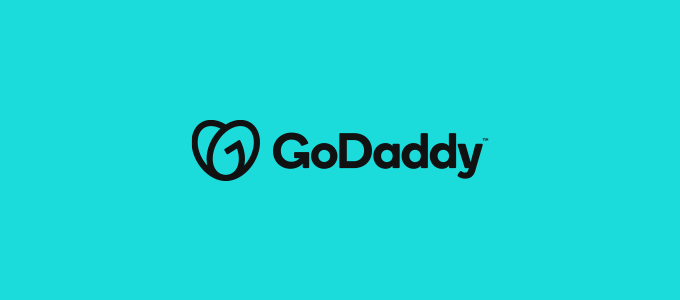

GoDaddy‘s backorder service is popular because it is closely integrated into its comprehensive domain marketplace.
This is what I like about GoDaddy:
- Access to professional brokers who can assist if the domain doesn’t drop.
- They don’t just try once. They make several attempts to secure the domain.
- They carefully monitor your desired domain’s status.
- With a vast user base, they have a track record of successful acquisitions.
But one downside I’ve noticed is that competition can be fierce on GoDaddy. If multiple users backorder the same domain, then it could go to auction, potentially driving up the price beyond what you’re comfortable paying.
5. DropCatch
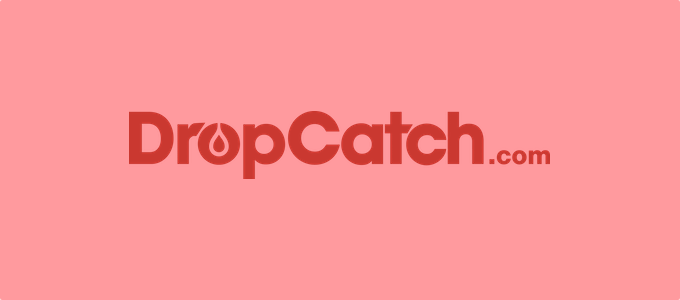

DropCatch has proven to be one of the most powerful backorder services available, especially for high-value and highly competitive domains.
This is what I like about DropCatch:
- With over 1,000 ICANN-accredited registrars, they send multiple simultaneous registration requests the moment a domain drops.
- They’ve invested heavily in their drop-catching systems, making them incredibly quick.
- Managing backorders is straightforward with their clean dashboard.
- If multiple users backorder the same domain, then they hold a public auction.
One thing to note is that the base price is higher than that of some competitors. Also, popular domains can end up in competitive auctions, driving up the final price.
An Overview of the Top Domain Backordering Services
You can use this table to compare the pricing and key features of each domain backordering service:
| Provider | Backorder Price | Additional Fees | Options | Payment Terms |
|---|---|---|---|---|
| Domain.com | Varies | Depends on domain and services | Premium domains available | Charged upon successful acquisition |
| Namecheap | $18.88 | None | N/A | Only charged if successful |
| Network Solutions | $35.00 | Varies for premium services | Priority services offered | Fees may apply even if unsuccessful |
| GoDaddy | $24.99 | $4.99 processing fee (non-refundable) | $69.99 Premium Backorder | Full amount only if successful |
| DropCatch | $59.00 | None (auction may apply) | N/A | Only charged if successful |
My Experience and Recommendations
I find that the best approach is to use multiple backordering services simultaneously. It increases your chances, especially for high-value domains where competition is fierce.
And remember, no service can guarantee success. It’s important to weigh the costs against the value of the domain to you. Don’t hesitate to reach out to customer support with any questions.
Selecting the right backordering service boils down to your specific needs, budget, and the domain you’re targeting. By understanding what each service offers and how they align with your goals, you’ll be well on your way to securing that perfect domain name.
Properly Placing a Backorder Domain
Once you have chosen a backordering service, you will need to sign up for an account if you don’t already have one.
This usually involves providing some basic contact information and setting up payment methods. I like to set this up in advance so I’m ready to act when the time comes.
Next, you should use the backordering service’s search function to locate the domain you want to backorder. Confirm that the domain is eligible for backordering and note any specific conditions or auction processes that may apply.

Simply follow the prompts to place your backorder. This typically involves agreeing to terms and conditions and making the necessary payment.
Some services only charge you if the backorder is successful, while others may require an upfront fee. I appreciate services that offer transparent pricing with no hidden fees.
Monitoring the Domain Backorder Progress
When you place your backorder, make sure you enable notifications so you receive updates about its status. In my experience, staying informed is key, especially if the domain goes to auction or if additional action is required on my part.
Once your backorder is in place, it’s a bit of a waiting game. The domain will move through its expiration phases, and your backordering service will monitor it closely.
I recommend checking in from time to time to stay updated. If your service offers a dashboard, then use it to track the domain’s status.
Remember, patience is part of the process. Domains can take weeks or even months to become available, depending on where they are in the lifecycle. I like to set reminders for myself so I don’t become too fixated, but still stay on top of any developments.
Potential Domain Backorder Outcomes
When you place a domain backorder, there are a few possible outcomes. I’ve experienced all of them at one point or another. Understanding these outcomes can help you prepare for each scenario and decide your best course of action.
Outcome 1: Your Domain Backorder Is Successful
If your backorder is successful, you should celebrate!
But first, you’ll need to complete the registration process to officially secure the domain. This usually involves confirming your contact details and agreeing to any registrar terms. I like to double-check everything at this stage to ensure there are no hiccups.
Once registered, don’t forget to set up auto-renewal if you plan to keep the domain long-term. I’ve learned from experience that it’s easy to forget renewal dates, and auto-renewal provides peace of mind.
Outcome 2: The Domain Backorder Goes Up for Auction
Sometimes, several users will place backorders on the same domain. In such cases, the domain often goes to auction.
I’ve been through a few of these, and while they can be intense, having a strategy helps.
Here are some tips if you find yourself in a domain auction:
- Decide beforehand the highest amount you’re willing to pay and stick to it. It’s easy to get caught up in the moment, but you’ll thank yourself later.
- Some auctions are public, while others are private among the interested backorder parties. Knowing the rules can give you an edge.
- Auctions have time limits. Keep an eye on deadlines to ensure you don’t miss out.
I’ve found that staying level-headed during auctions helps. In my opinion, it’s better to walk away than overextend your budget for a domain that’s not absolutely critical.
Outcome 3: Your Domain Backorder Is Unsuccessful
Sometimes, despite your best efforts, your domain backorder may be unsuccessful. It’s disappointing, but don’t give up. There are alternative paths you can take.
I’ll cover these alternatives in the next section, so keep reading for further guidance.
Alternatives to Domain Backordering
Don’t lose hope if your backorder attempt doesn’t pan out. I’ve helped many friends secure their desired domains through alternative methods that can be just as effective.
Contacting the Current Domain Owner
Sometimes, the direct approach is the most straightforward. If the domain you want is already taken, then reaching out to the current owner might be your best bet.
First, you’ll need to perform a WHOIS lookup to find the owner’s contact information. I show you how to do this in my guide on how to find out who actually owns the domain name.
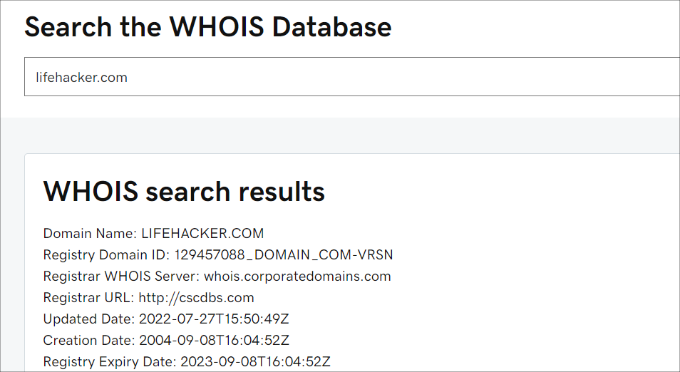
When reaching out, keep your communication professional and courteous. Introduce yourself and express genuine interest in purchasing the domain.
I’ve found that being transparent about our intentions helps build trust. You might say something like:
“Hello, I’m interested in acquiring your domain example.com for my upcoming project. Would you be open to discussing a potential sale?”
Be prepared to negotiate on price. The owner might have a specific value in mind, or they may ask you to make an offer. It’s wise to have a budget in place and know how much the domain is worth to you.
In my experience, starting with a fair offer can move the conversation along more smoothly.
Considering Different Domain Extensions
If acquiring the exact domain name isn’t possible, then exploring alternative domain extensions can be a solid Plan B.
I’ve had friends who initially wanted a .com but found success with other top-level domains (TLDs) like .net, .org, or even newer extensions like .io or .co.
Here are some things to consider:
- Relevance: Choose an extension that makes sense for your industry or audience. For example, .org is commonly associated with non-profits.
- Availability: Alternative TLDs often have more availability, increasing your chances of finding the perfect name.
- Brand Consistency: Make sure that the new extension doesn’t confuse your audience. I’ve found that clear communication in marketing materials helps avoid this.
While .com is still the most recognized TLD, alternative extensions can offer a unique touch to your brand. In my opinion, it’s better to have a memorable domain with a different extension than an overly complex .com that no one can remember.
Modifying Your Desired Domain Name
Another option is to slightly modify your desired domain name. This could involve adding a keyword, using abbreviations, or incorporating your location.
Some strategies I’ve seen work well include:
- Adding Action Words: If ‘example.com’ is taken, consider ‘getexample.com’ or ‘tryexample.com’.
- Including Your Niche: Tailor the domain to your industry, like ‘examplemedia.com’ or ‘exampletech.com.
- Using Shortened Versions: Abbreviations or acronyms can make your domain concise and memorable.
Just make sure that any modifications still align with your branding goals. Consistency is key, and you want your domain to reflect your business accurately.
I’ve seen companies successfully rebrand around a modified domain, turning it into a unique asset rather than a compromise.
Considering Subdomains
Using a subdomain is another creative solution. If you already own a primary domain, then you can create a subdomain for your new project. For instance, if you already own ‘example.com,’ you could try ‘blog.example.com,’ or ‘store.example.com.’
While subdomains might not be ideal for standalone brands, they can be effective for different sections of your website or for launching new initiatives under an existing brand umbrella.
Final Thoughts
Missing out on a backordered domain can be frustrating, but it’s not the end of the road. I’ve navigated these challenges before and found that with a bit of creativity and persistence, you can secure a domain that works for you.
Remember:
- Be open to alternatives and consider how they might even offer new opportunities.
- Whatever route you choose, ensure it aligns with your overall brand strategy.
- The digital landscape moves quickly. Acting promptly increases your chances of securing the domain you want.
At the end of the day, your domain is just one piece of the puzzle. It’s important, yes, but what you build on that domain is what truly counts.
So keep moving forward, and don’t let a minor setback derail your plans.
Frequently Asked Questions About Domain Backorders
I’ve covered a lot of ground on domain backordering, but you might still have some questions. Here are answers to some of the most common queries I’ve been asked.
1. What exactly is a domain backorder?
A domain backorder is a service that allows you to ‘reserve’ a domain name that’s currently registered to someone else.
If that domain becomes available because the current owner doesn’t renew it, then the backorder service attempts to register it on your behalf the moment it drops.
2. Is there a guarantee I’ll get the domain I backorder?
No, there’s no guarantee. I’ve found that while backordering improves your chances, it doesn’t ensure success.
Other people might also backorder the same domain, or the current owner might renew it at the last minute. But using a reputable backordering service certainly gives you a fighting chance.
3. What happens if multiple people backorder the same domain?
If several parties place a backorder on the same domain, then most services will hold a private auction once they secure it. The domain goes to the highest bidder in that auction.
I recommend setting a clear budget before you start bidding.
4. Do I have to pay if the backorder isn’t successful?
It depends on the service. Some, like Namecheap, only charge you if they successfully secure the domain. Others might have non-refundable fees or processing charges.
I always read the fine print to understand any potential costs upfront.
5. How long does the backordering process take?
The timeline can vary. It depends on where the domain is in its lifecycle. It could take as little as 30 days if the domain is near expiration or several months if it’s just been renewed.
I’ve learned to be patient and keep tabs on the domain’s status through our backordering service.
6. Can I backorder a domain that’s already expired?
Yes, you can. If a domain has expired but isn’t yet deleted, then it’s often in the redemption or pending delete phase. This is a prime time to place a backorder.
In my experience, acting quickly during this window can improve your chances of success.
7. What if the current owner wants to sell the domain?
If the owner is open to selling, then you might consider reaching out directly to negotiate a purchase. I’ve sometimes found this to be a quicker route.
However, be prepared for the owner to ask for a premium price, especially if the domain has significant value.
8. Is backordering legal and ethical?
Absolutely. Domain backordering is a legitimate service offered by many accredited registrars. It’s a first-come, first-served system once a domain becomes available.
I always make sure I’m not infringing on trademarks or engaging in cybersquatting, which can lead to legal issues.
9. Can I cancel a backorder after placing it?
Policies on cancellations vary by service. Some allow you to cancel and get a refund if the domain hasn’t been secured yet. Others might not offer refunds.
I make it a habit to thoroughly review cancellation policies before placing a backorder.
10. What if the domain I want is in an auction?
If the domain is already in an auction, then you won’t be able to backorder it. Instead, you’ll need to participate in the auction to bid on the domain.
I’ve found that auctions can be competitive, so it’s important to set a budget beforehand.
11. Can I use multiple backordering services for the same domain?
Yes, and I often do. Using multiple services can increase your chances since different services might have different levels of success in capturing the domain. Just keep in mind that if more than one service succeeds, you might end up in multiple auctions.
Related Guides: Domains & How to Buy Them
I hope this tutorial helped you learn what a domain backorder is and how to place one properly. If you’re looking for more useful information about domain management, check out these guides:
If you liked this article, then please subscribe to our YouTube Channel for WordPress video tutorials. You can also find us on Twitter and Facebook.


